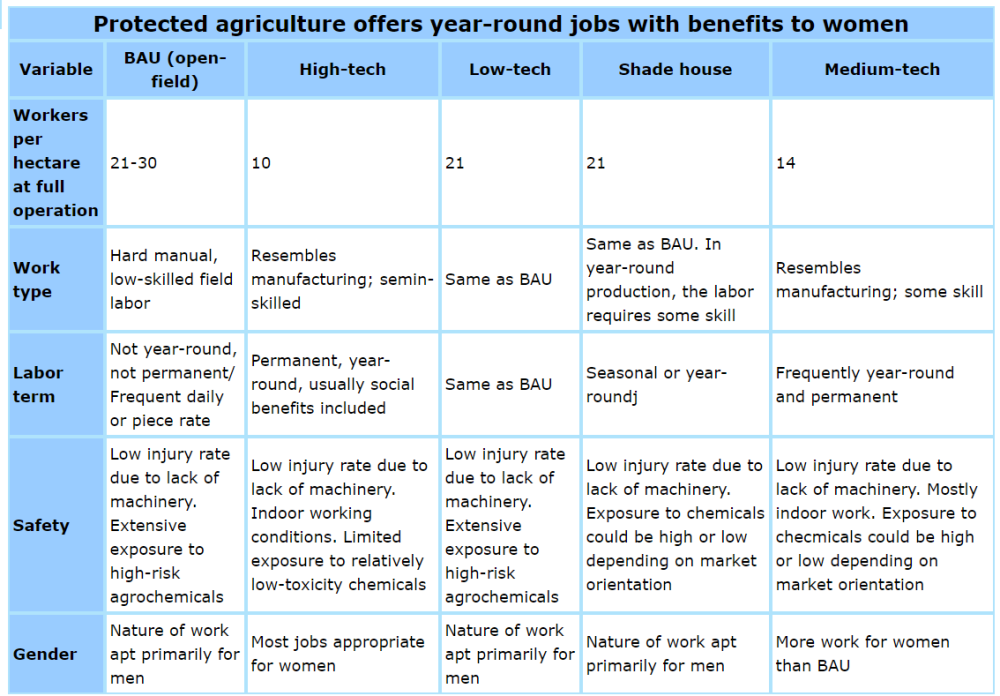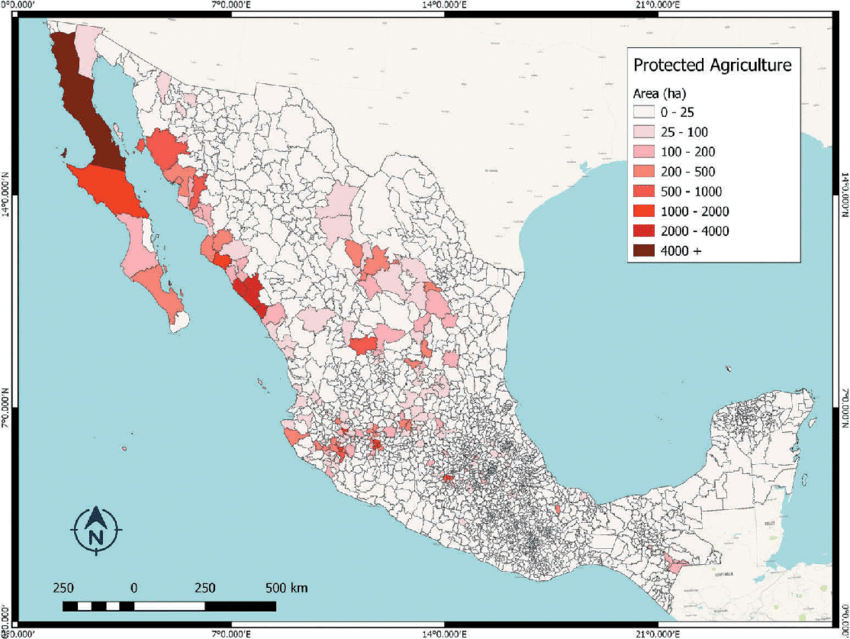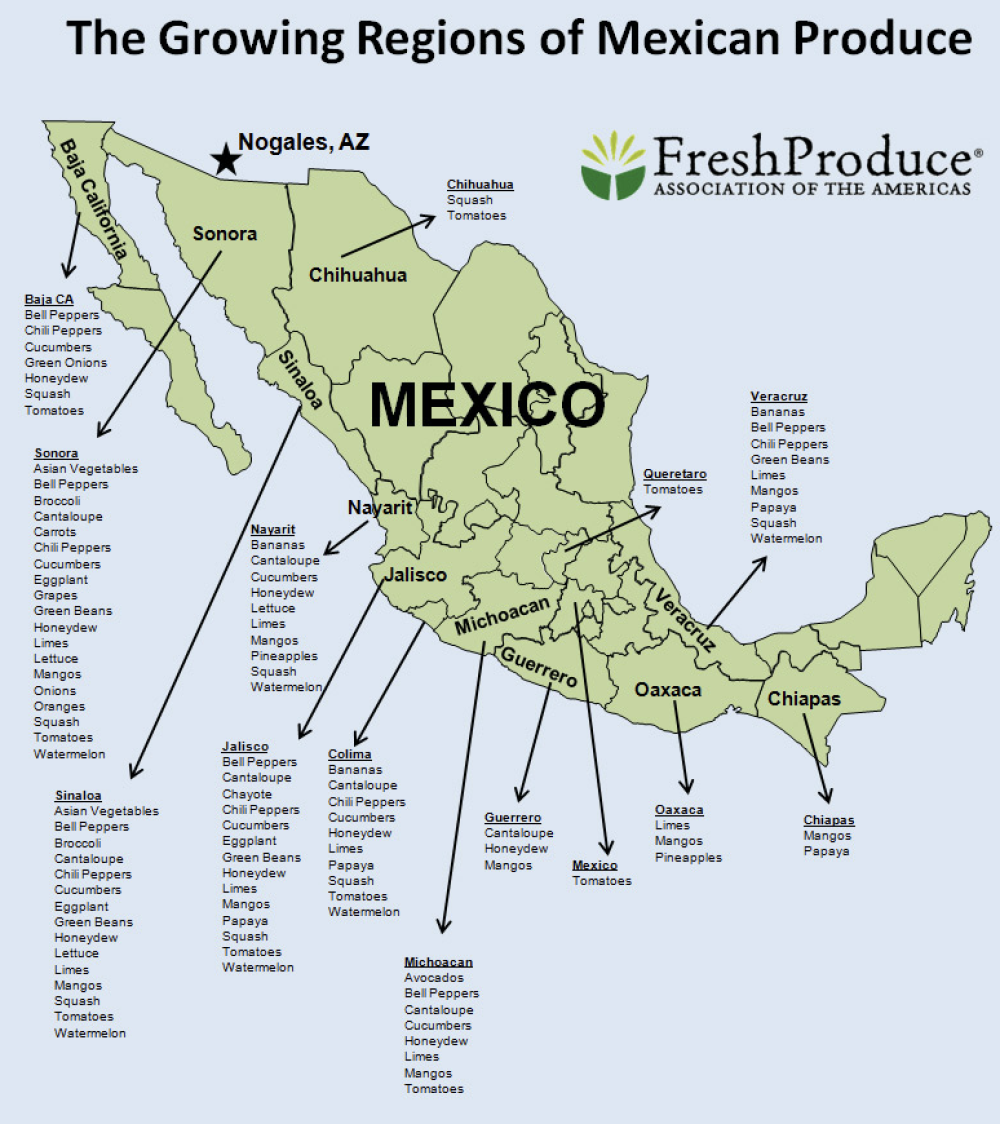Mexico is a world leader in protected agriculture, structures that fully or partially protect plants from excessive rain and sun during their growth. There are three major types of protective structures for crops: high-tech greenhouses, low-tech structures that use metal hoops covered with plastic to enclose and protect plants, and open-sided shade houses that protect plants from rain and sun. Medium-tech protective structures are a mix of hoop and shade structures.
Data sources disagree the size of Mexico’s protected agriculture. Pratt and Ortega report that Mexico’s protected agriculture area expanded from less than 800 hectares in 2000 to over 23,000 hectares in 2015. About 70 percent of Mexico’s protected agriculture hectares in 2015 were devoted to tomatoes, 16 percent to bell peppers, and 10 percent to cucumbers. Over 80 percent of the vegetables produced under protective structures were exported to the US.
The Packer reported 330 acres of protected agriculture in Mexico in 2003 and 106,000 acres (42,500 hectares) in 2018, including 27 percent greenhouses, 29 percent hoop or macro tunnels, and 45 percent shade houses, citing AMHPAC, the Mexican Association of Protected Horticulture. Greenhouses at higher elevations, such as those in Guadalajara and Queretaro, operate year-round.
AMHPAC reported that tomatoes were 55 percent of the commodities grown under protected agriculture structures, followed by 20 percent each for bell peppers and cucumbers. AMHPAC says that protected agriculture is two percent of the Mexico’s 6.3 million acres of fruits and vegetables, but they generate 17 percent of Mexico’s fruit and vegetable revenue. Over half of Mexico’s protected agriculture acres were in Sinaloa (20 percent), Jalisco (20 percent), and Michoacán (17 percent).
Yield gains in protected agriculture are striking. Open field production of tomatoes on irrigated land yields 40 tons per hectare, while high-tech greenhouses that use substrate instead of soil for tomato plants generate yields of 150 to 300 tons per hectare. Low-tech hoop structures and shade houses triple tomato yields.
Many high-tech greenhouses produce year-round, which leads to year-round jobs that are often filled by women, while men dominate in open-field crop production. High-tech greenhouses employ five to 10 workers per hectare compared to 20 or more workers per hectare in open fields and in low-tech greenhouses. AMHPAC reported that its member firms with protected agriculture structures employed 90,000 workers in 2019, including 30,000 who were employed year-round.
Workers consider high-tech greenhouses better places to work. Almost all employers using protected structures to produce crops enroll their workers in Mexico’s IMSS program and pay taxes on worker wages that cover the cost of health and child care as well as pensions. Exposure to toxic chemicals is less in high-tech greenhouses than in open field agriculture, and safety and labor compliance protocols are more likely to be followed in high-tech greenhouses that involve significant investments and US buyers.
Protected agriculture reaches 126,000 acres in Mexico. The Packer, September 17, 2019.
Protected agriculture offers year-round jobs with benefits to women

Mexico’s protected agriculture in 2015

Almost half of Mexican states produce fruits and vegetables to export

Author


Mexico Institute
The Mexico Institute seeks to improve understanding, communication, and cooperation between Mexico and the United States by promoting original research, encouraging public discussion, and proposing policy options for enhancing the bilateral relationship. A binational Advisory Board, chaired by Luis Téllez and Earl Anthony Wayne, oversees the work of the Mexico Institute. Read more

Explore More
Browse Insights & Analysis
360° View of How Southeast Asia Can Attract More FDI in Chips and AI


